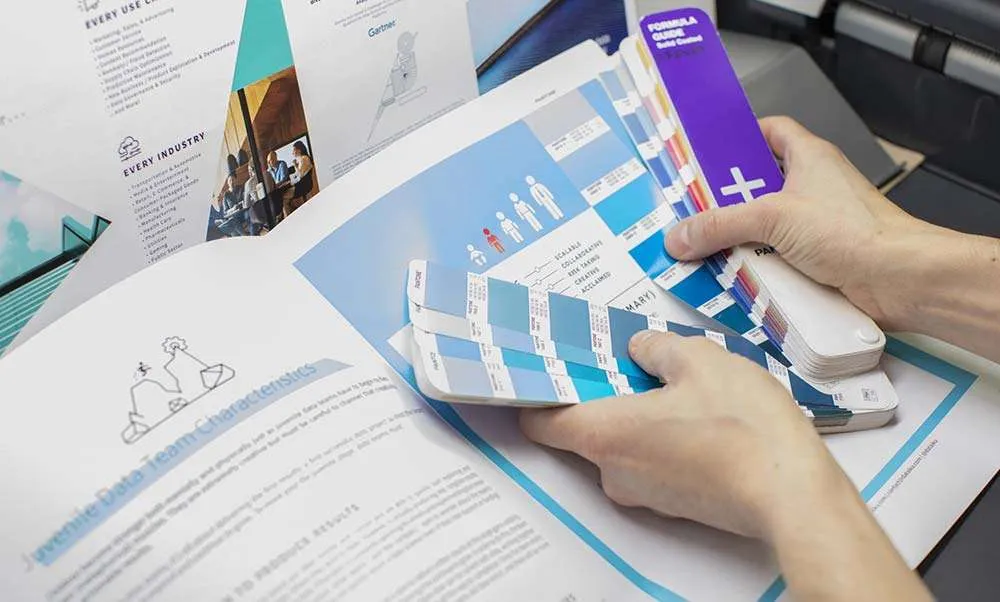
Printing Processes Explained: What Are They?
September 22, 2021
Welcome to our three-part series, From Idea to Art: Kickstarting Your Project’s Print Journey. We will walk our readers through options you can choose from to reproduce your graphic art for distribution and sale. In this first blog post, we’ll look at the basic printing processes Bestype’s technicians use every day.
Call us biased, but we believe that analog art is the best way for most human beings to interact with your creativity when you share your work. Reproducing your graphics, including fine art photographs of sculpture and crafts, should include searching for a printer who holds their craft to the highest printing NYC standards. The printer you select needs to be familiar with more than the basics. At Bestype, we help your audience engage with your imagination. Our customers work alongside professional printing solutions technicians — we help artists represent their work and get it into hands and onto walls. Navigating your choices in art reproduction is easier with a little expert guidance.
Pick a Process
Graphics reproduction relies on various technologies available through local print shops, like Bestype Imaging. The industrial printing processes most commonly available for printing NYC local artists’ designs are:
- Offset Lithography
- Flexography
- Digital Printing and Large Format Printing
- Gravure Printing
- Screen Printing
These techniques are fast, affordable choices that work for small print runs or high-volume printing, with a noticeable difference seen in digital printing, discussed later.
Offset Lithography is a printing process invented hundreds of years ago and modernized through using present-day technology. Offset lithography relies on printing plates, usually constructed from aluminum. Each plate gets etched with the image that needs to be printed. When technicians apply ink to each plate, only the image part retains the ink. The ink from the image is offset onto a rubber “blanket” and then rolled onto the printing surface (substrate). Offset presses make printing hundreds and even thousands of individual units or pages easy and fast once the plates are created and loaded into the machine. Offset printing can be used on more than paper — cardboard, plastic, and other flat surfaces are excellent materials that accept offset lithographic printing. Many graphic artists prefer offset printing because offset uses a digital color calibration system, monitored by human eyes, ensuring that every print is perfect. This system, Pantone Color Matching, calibrates colors exactly to the artist’s original intention.
Flexography is a process based on updated, classic relief printing techniques. Technicians transfer images to a rubber printing plate — once inked, the image presses directly onto the printing surface, like a rubber stamp. Flexography works on paper, plastics, cellophane, metals, and many other materials. Designers use flexography (also known as “flexo”) for packaging and labels. Flexo printing machines print in black and white, grayscale, and color, making printing flexography fast and efficient.
Digital Printing uses advanced commercial inkjet printers to create various sized prints. Small graphic prints or wide-format printing projects like jumbo signs and banners use different sizes of printer beds. Inkjet printers’ nozzles propel tiny sprays of ink onto many types of substrates, including paper, plastic, canvas, wood, and ceramics. Graphic artists use digital wide format printing to reproduce posters and transfer upscaled images to large signs, banners, and screens. Art can be downsized, scaled to fit postcards or small 8″ x 10″ wall frames.
Gravure Printing (or rotogravure) is where printers engrave an image directly onto
a printing cylinder. Once the cylinder receives the ink, the high-speed rolling cylinder transfers the image to paper as it passes underneath. Printers use gravure for high-volume projects, including newspapers, magazines, and packaging.
Screen Printing (which also goes by the terms silk screen printing and serigraphy) uses a woven fabric screen. Technicians transfer designs to a mesh, and then parts of each mesh receive a coat of non-permeable material. Those coated areas become open spaces where ink can be injected or sprayed through the mesh onto the receiving substrate. Screen printing works on 2-D and 3-D objects, meaning more than surfaces that lie flat. Textiles, glass, ceramics, wood, and metal are great candidates for commercial screen printing.
Getting Started With Your Next Art Printing Project
As the New York’s creative community’s go-to resource for fine art printing, Bestype deeply understands the needs of our artists and helps them reproduce their art in many ways. When you contact us with your next project, we will walk you through all of the choices available to you that will help make your project successful. We partner with our customers and learn what they need to succeed. Our staff offers technical expertise to print to the highest fine art printing NYC standards. Plus, we stock every conceivable paper, ink, and other material to use in your printing project.
Whatever you need to reproduce, we can print. Reach out to us today, and we’ll arrange an in-person consultation in our conveniently located SOHO print shop. There, we’ll proudly show off samples of the reproduction projects we’ve helped other artists and agencies print.
Next: we’ll explore How to Choose the Right Printing Process & Material Based on Your Needs as an artist or agency.
Tags: art reproduction, digital printing and large, fine art photographs, flexography, format printing, graphic art, gravure printing, offset lithography, printing NYC, printing processes, printing solutions, Reproducing graphics, screen printing